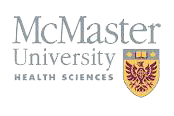A response to an article in the BMJ by Dr. Kien Trinh, Program Chair, Medical Acupuncture Program, McMaster University. Courses held at School of Medicine
Housley’s intuitive comment about the patient correct perception of being punctured, “Surely therefore they must have known they were not getting acupuncture” contradicts existing research findings. There were at least 3 studies in which the participants observing the procedure of being punctured were sufficient to convince them of “feeling punctured.”
In fact, in the Streitberger study [1], 78% in the non-punctured group felt needle penetration and not all (90%) in the acupuncture group felt punctured. Similarly, the study by Dr. P. White [2] on the Streitberger “placebo” needle verified that “most patients were unable to discriminate between the needles by penetration.” Dr. A. White in the rapid response described their study [3] in which “The sham was not distinguishable from the real needle” on a modified version of the Streitberger “placebo” needle.
The findings are consistent in all these studies published on this topic. The comments made by Baker and others about the acupuncturist not been blinded are absurd and puzzling. Do they really expect the physician to be blinded in a cortisone injection trial or the surgeon to be blinded in a surgical trial? Acupuncture treatments, although generally safe, have the potential to cause some serious complications as in injection or surgery.
Baker’s understanding of double blinding referred to blinding in drug trials and do not necessary apply to procedural therapy studies where the treating physicians or the practitioners cannot be blinded. If they have some constructive ideas of how to blind the treating acupuncturists in delivering real or sham treatment, let’s hear it. It will be a monumental leap in acupuncture or procedural therapy research. Unblinding at other levels also has the potential of introducing bias and affects the study outcome. Blinding of the evaluators and patients is also described as double blinding [4]. This description is accepted in many of the Cochrane reviews. Dr. White pointed out that Vas et al should ask about blinding; a valid suggestion.
However, this is seldom done even in conventional therapies. Only 7% of the general medicine trials provide information on blinding testing in a review of the 5 leading general medicine journals [5]. The issues of whether blinding testing should be done is still highly controversial as reflected in the number of comments posted in the rapid response site on Fergusson’s blinding testing article. The issue of blinding testing at the end of the study was rejected by Sackett and questioned by Altman. No one points out that the results are consistent with the finding of the systematic review by Ezzo et al [6] about acupuncture’s effectiveness on pain compared to sham. This is confirmed by a large scale study (570 patients) by the University of Maryland group, where this study also confirmed the adjunctive benefit of acupuncture when added to NSAIDs or analgesic on pain and function compared to sham acupuncture and NSAIDs or analgesic.
The findings of this study were just reported at the annual scientific meeting of the American College of Rheumatology a few weeks ago. This study by Vas et al in a smaller scale, although with some differences in design, independently verified some of these results. Many are quick to jump to attack the methodology, judging by their skeptical and sometimes sarcastic comments, the results go against their beliefs. Debates are valuable especially if they contribute to enhancing research methodology. Judging from many of the comments here, evidence appears to be used to confirm their beliefs and attacking the methodology when the results contradict their beliefs; the worst form of evidence- based discourse.
1. Streitberger K, Kleinhenz J. Introducing a placebo needle into acupuncture research. Lancet 1998;352:364-5
2. White P, Lewith G, Hopwood V, Prescott P. The placebo needle, is it a valid and convincing placebo for use in acupuncture trials? A randomised, single-blind, cross-over pilot trial. Pain 2003;106(3); 401-9
3. Park J, White A, Stevinson C, Ernst E, James M. Validating a new non-penetrating sham acupuncture device: two randomised controlled trials. Acupunct Med 2002;20:168-74.
4. Jadad AR. Randomized controlled trials. BMJ book 1998. London.
5. Fergusson D, Cranley Glass K, Waring D, Shapiro S. Turning a blind eye: the success of blinding reported in a random sample of randomised, placebo controlled trials. BMJ 2004;328:432.
6. Ezzo J, Berman B Hadhazy VA, Jadad AR, Lao L, Singh BB. Is acupuncture effective for the treatment of chronic pain? A systematic review. Pain 2000; 86: 217-25.
